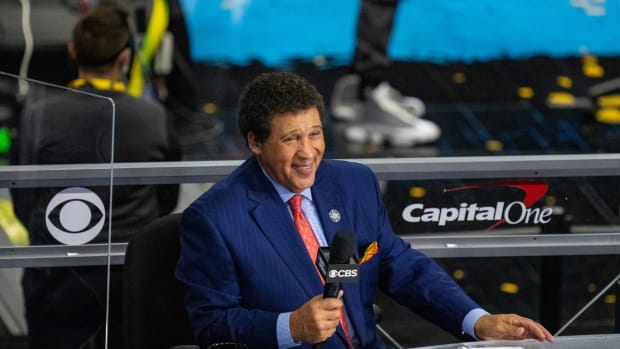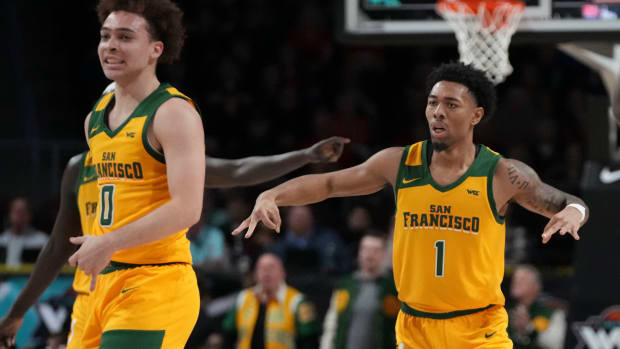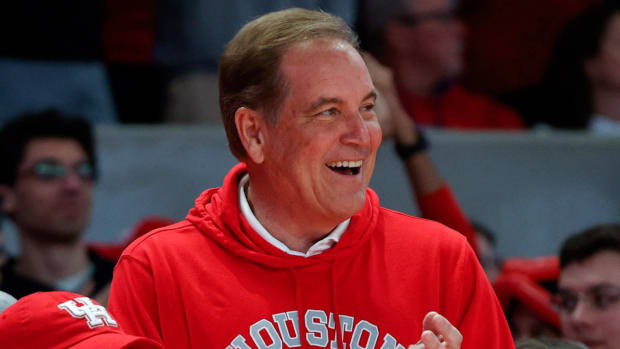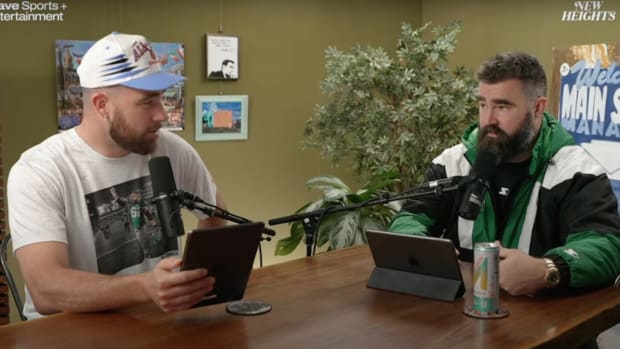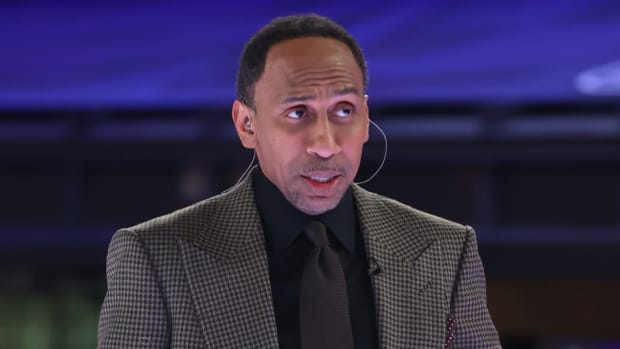Good Morning Football Is Popular Among Players, But Still Searching For Mainstream Audience
Minutes after a Saturday walkthrough, Panthers coach Ron Rivera is ready to play the role of media critic. But first he has to make his lack of accreditation clear. “I’ll be honest, I really don’t watch and listen to sports stuff,” he says. “I really don’t even read the paper …. The only show I can say I regularly see in the morning is Good Morning Football.”
Rivera got himself hooked on the NFL Network show, which launched in 2016, after seeing snippets during his workouts. “I just realized, I really enjoy listening to those guys—their banter,” he says. Now he can watch each morning from the reception room, the weight room, the training room, or the team cafeteria. It’s on everywhere.
While executives are still waiting for the show to break through in terms of national ratings, it’s already become a hit in league circles as co-hosts Kay Adams, Kyle Brandt, Nate Burleson, and Peter Schrager have become common faces in all 32 facilities. On the coasts, Los Angeles coach Sean McVay and Atlanta GM Thomas Dimitroff are fans. In the heartland, Packers quarterback Aaron Rodgers and Vikings coach Mike Zimmer have been known to tune in. Jaguars coach Doug Marrone eagerly visited the set during his short summer vacation. As his linebacker Telvin Smith puts it, “Everyone in football knows about Good Morning Football.”
As a result, the fourth wall often comes crashing down. Last year, after Schrager jokingly referred to the Panthers’ little-known wideouts as “the law firm,” Rivera conducted a press conference wearing a T-shirt with the scales of justice on it. Jogging off the field after a playoff win over the Falcons, Eagles defensive lineman Brandon Graham called out the show. “That blew my mind—still does,” Burleson says. Davante Adams and Martellus Bennett are among the many players that have tweeted their reactions to certain segments. “The connection to football that they have and the ties the different personalities have to everyone around the league is what is appealing to me,” Smith says. Altogether, the show feels something like morning announcements for what would be the weirdest high school in America. Good Morning Football is both about NFL culture and a part of it.
That’s exactly what executive producer Michael Davies envisioned. While many NFL Network shows are produced in-house, former NFL chief content officer Jordan Levin brought in Davies—one half of the popular soccer show Men in Blazers and the CEO of production company Embassy Row—to revamp the network’s morning offering.
Davies’s first task was casting, and his first call was to Adams. He says “one of the biggest mistakes I made” when producing Fox Sports’ short-lived Crowd Goes Wild was not hiring Adams, who had impressed him with her poise. Schrager was the second person added after having been a frequent guest on CGW. Burleson came at the network’s recommendation, and Davies was instantly sold on adding him as well. For a while, Davies thought those three would be the show. But Adams convinced him that Brandt would bring needed energy. “He’s been the one who has really surprised me,” the producer says.
When head of NFL Media Brian Rolapp asked how the show should be judged back then, Davies’s first response was: “We are making a show that we want to be watched in the locker rooms and offices of your league.” And he had a simple formula to make that happen.
First, GMFB would be a positive show. Yes, they’ll discuss the anthem, questionable penalty calls, off-field incidents. “But the rest of the media is going to cover that better than we are,” Davies says. “Good Morning Football’s main job is to build character and narrative and storylines out of these remarkable athletes.” Coming from England, he was shocked by how little people knew about players across the league—their individual stories. That presented opportunity.
Second, the show had to be controlled editorially by the on-air talent, meaning it would go as far as its leading quartet could take it. The first time they were all in a room together was for the run of preparatory mock shows—and the lack of chemistry showed. Awkward silences lingered. “There were some real crash-and-burn moments, both on and off the air,” Mark Quenzel toldSportsBusiness Journal. “The first few months into the show were not pretty for anybody and frustrating for everybody.”
While the show was still in its experimental phase, the hosts bonded off-camera. “We'd be talking about whatever happened that weekend, completely separate from sports, and then we'd go on to football,” Burleson says. “And then we thought, like, Why are we stopping our most engaging conversations when the lights turn on? Let's just marry the two.”
Sitting a few feet from the set after finishing a show, Schrager then jumps in to continue the story: “...and the reaction on Twitter was crazy,” he says. “People were like, wait a minute, I've never seen this before.”
“We each have our role that none of the other ones are playing,” Brandt says. “It works for us. We have a bassist, lead singer, guitarist and drummer.”
“Can you tell we talk for three hours a day?” Adams says.
Davies offered a second metric to Rolapp as well though, back in the beginning. “We want the show to be famous,” he said. He felt that NFL Network had not produced a transcendent hit since Red Zone, and even that had been a replica of a DirecTV invention.
Bill Simmons has called the show “legit entertaining.” ESPN analyst Dan Orlovsky replied that it’s the “only morning show worth the actual time to watch.” Vikings running back Latavius Murray had so much fun guest hosting that he’s now considering a future in media. And even Rivera has noticed the similarities between GMFB and the Mike Greenberg-led Get Up! “It looks other people are trying to copy it,” Rivera says. “ESPN has the same format now.” But the popularity within media and league circles has not yet produced a public phenomenon.
This year, the show has moved to a new studio in the heart of Times Square, the clearest indication yet of both its internal support and its ambition. Still the show is mainly hoping that the vibe it has found with constant conversation and relaxed interviews will eventually be the key to attracting big numbers. “All of us built this baby together and we want to see a growth,” Brandt says. “We want to be creative. We want to be asymmetrical. This is the third fall we've come into and it just should be bigger.”
Ultimately, GMFB is making the bet that camaraderie will outdraw controversy. What NFL figure wouldn’t get behind that?
